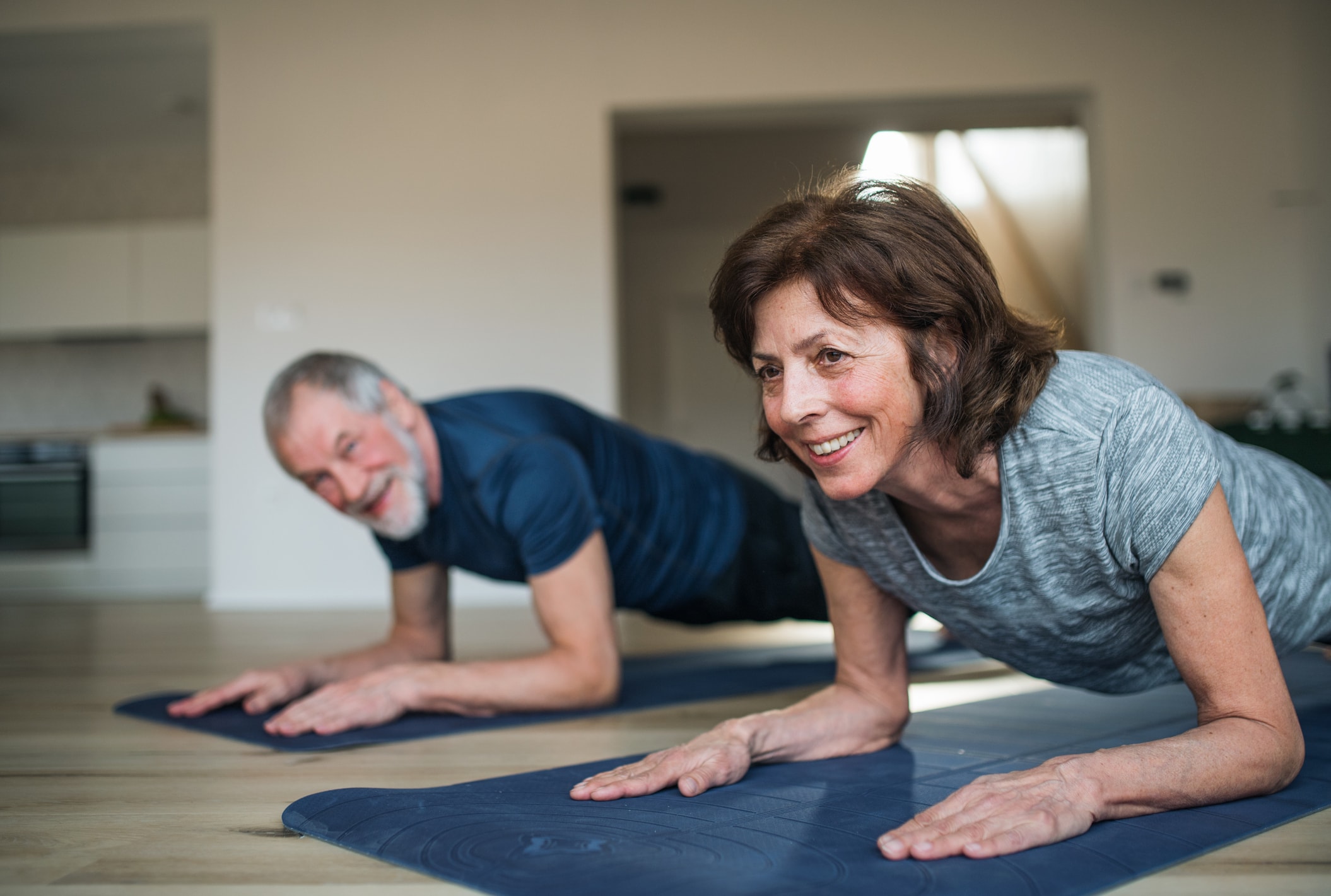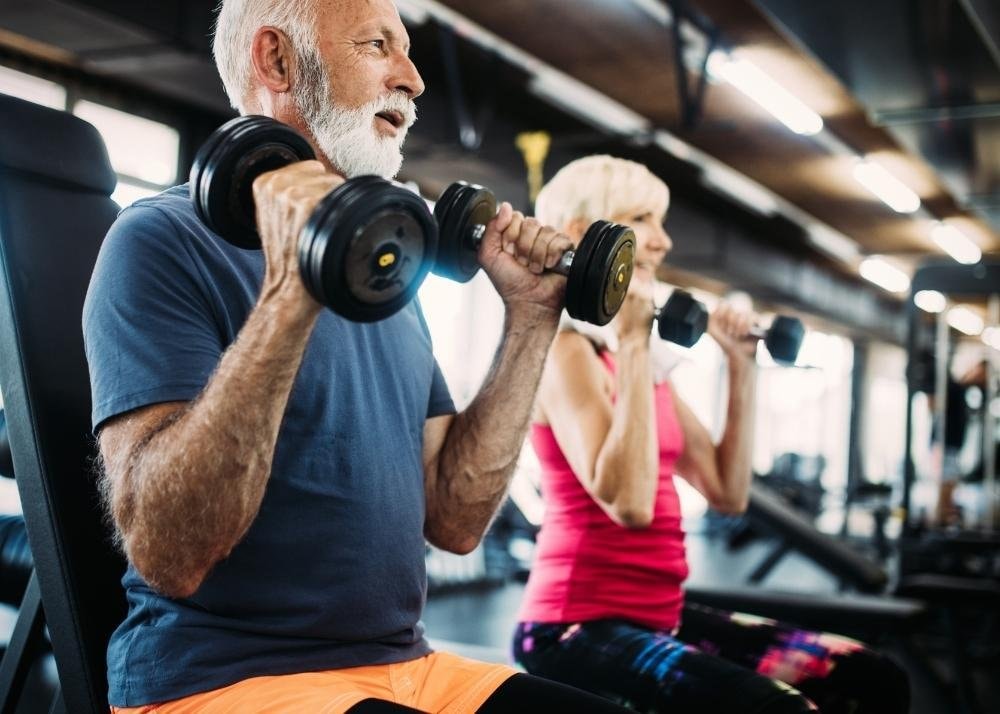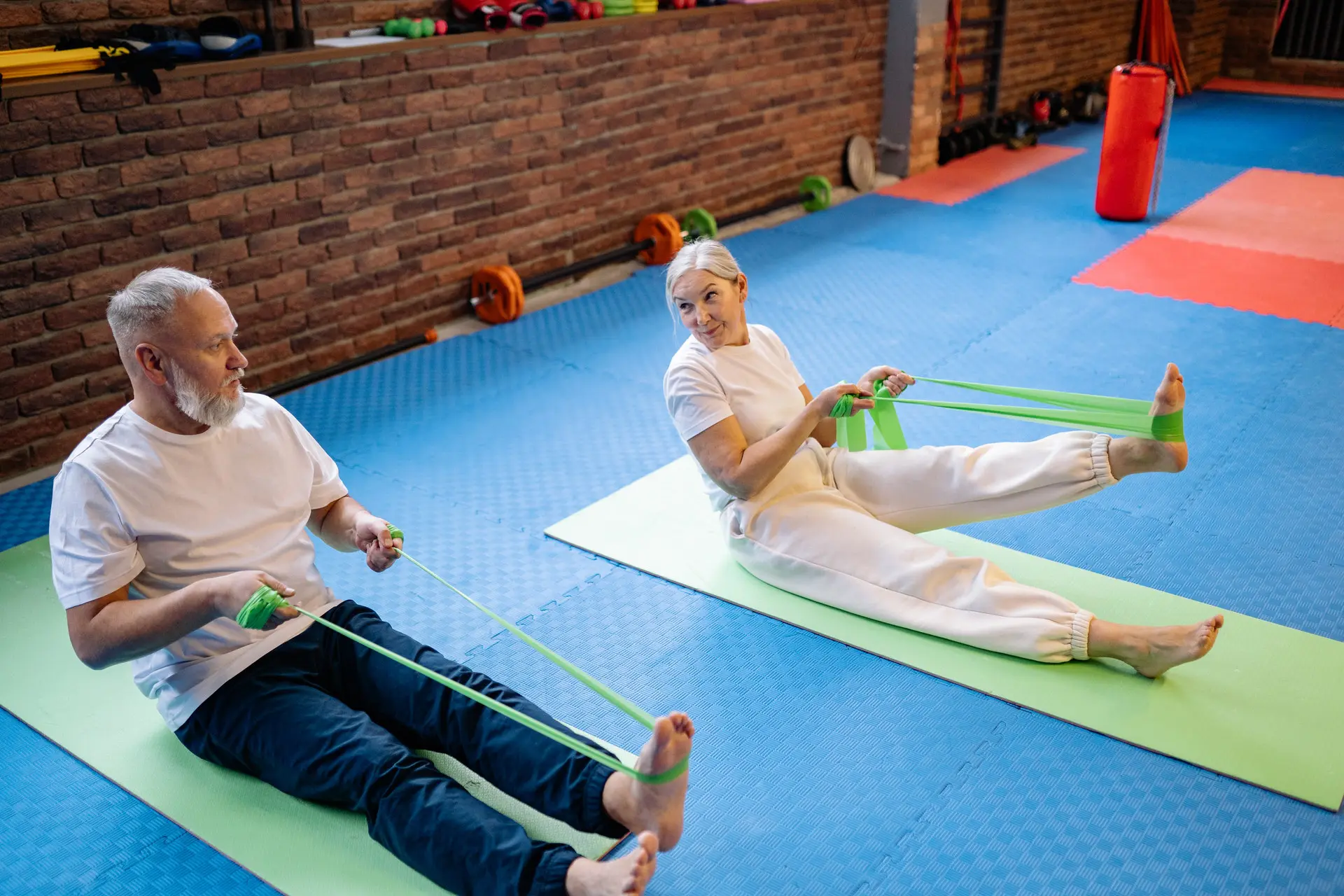Isometric exercises for seniors with limited mobility provide a valuable way to maintain physical fitness and overall health. As we age, focusing on strength and stability becomes increasingly important, particularly for those who may have difficulty engaging in traditional workouts. Isometric exercises involve contracting muscles without moving the joints, making them an ideal choice for seniors seeking effective and accessible ways to stay active. This article will explore the benefits of these exercises and offer safe routines designed specifically for older adults.
Incorporating isometric exercises into a daily routine can improve muscle strength, better balance, and enhanced mobility, all of which contribute to a higher quality of life. Whether performed at home or in a group setting, these exercises can be tailored to individual needs and capabilities. Join us as we delve into simple yet effective isometric movements that can help seniors with limited mobility regain confidence and vitality while promoting long-term health.
Isometric Exercises for Seniors with Limited Mobility: Easy Ways to Stay Fit at Home

Staying active as we age is essential, but it can be tricky for those with limited mobility. That’s where isometric exercises for seniors with limited mobility come in handy. These exercises involve holding a position without moving, which makes them perfect for seniors who may have trouble with more dynamic workouts.
Isometric exercises can help seniors build strength, improve joint stability, and boost endurance without putting extra stress on their bodies. They’re easy to do at home and don’t require any special equipment. You can do them while seated, making them great for those who use wheelchairs or have trouble standing for long periods.
Getting started with isometrics is simple. You can try leg lifts while seated or hold a dumbbell in a bicep curl position without moving your arm. These exercises can be done for a few seconds, gradually increasing the duration as you get stronger. Remember to breathe normally and stop if you feel any pain.
Key Takeaways
- Isometric exercises provide a safe, joint-friendly way for seniors with limited mobility to maintain fitness.
- These exercises can be done at home without special equipment, making them highly accessible.
- Regular practice improves strength, balance, and stability, enhancing overall mobility and quality of life.
- Isometric exercises can target various muscle groups, including arms, legs, and core, without putting excess strain on the body.
- Starting slowly and consulting with healthcare professionals ensures safe and effective incorporation into daily routines.
Benefits of Isometric Exercises for Seniors
Isometric exercises for seniors with limited mobility offer many advantages for older adults. These exercises can help you stay fit and healthy without putting too much strain on your body. Let’s look at some key benefits you can expect.
Improving Stability and Balance
Isometric exercises can boost your balance and stability. This is crucial as you age to prevent falls and injuries. Many isometric exercises engage your core, which helps improve your overall stability.
You’re training your muscles to hold steady positions when you do isometric exercises. This can translate to better balance in daily activities. For example, wall sits can strengthen your leg muscles, helping you stand more steadily.
Try this simple exercise:
- Stand with your back against a wall.
- Slowly slide down until your thighs are parallel to the ground.
- Hold this position for 30 seconds.
This works your leg muscles and improves your balance.
Enhancing Muscle Strength
Isometric exercises are great for building and maintaining muscle strength. As you age, it’s normal to lose some muscle mass. However, regular isometric exercises can help slow this process.
These exercises work by contracting muscles without moving them. This can lead to increased strength over time. For instance, holding a plank position engages multiple muscle groups at once. Here’s a simple arm strength exercise:
- Hold a lightweight in each hand
- Bend your elbows to 90 degrees
- Hold this position for 30 seconds
- Rest and repeat
This exercise works your biceps without any joint movement, making it safe and effective.
Boosting Joint Health
Isometric exercises are gentle on your joints. This makes them ideal if you have arthritis or joint pain. You can improve joint stability and reduce pain by strengthening the muscles around your joints. For example, to help your knee joints:
- Sit in a chair with your back straight
- Lift one leg straight out in front of you
- Hold for 10 seconds
- Lower and repeat
This exercise strengthens your thigh muscles without putting pressure on your knees. It can help support your knee joints and reduce discomfort.
Promoting Circulation
Isometric exercises can help boost your blood flow. This is important for overall health and can help reduce the risk of blood clots. When you contract your muscles during these exercises, it helps push blood through your body. Try this simple exercise to improve circulation in your legs:
- Sit in a chair
- Lift your toes off the ground, keeping your heels down
- Hold for 5 seconds
- Repeat 10 times
This exercise works your calf muscles and can help improve blood flow in your lower legs. It’s beneficial if you sit for long periods during the day.
Understanding Isometric Exercises

Isometric exercises for seniors with limited mobility can be a great way to build strength without moving your joints. They’re easy to do at home and don’t need special equipment.
Defining Isometric Exercises
Isometric exercises make your muscles work without changing their length. You push or pull against a fixed object or your body weight. Your muscles tense up, but you don’t move. For example, isometric exercises are pushing against a wall or holding a plank position.
Your muscles work hard, but there’s no visible movement. These exercises can help improve your mobility over time. They’re good for building strength and stability in specific muscle groups.
How Isometrics Differ from Other Exercises
Isometric exercises are different from most other types of exercise. In regular exercises, you move your muscles through a range of motion. With isometrics, you hold still in one position. This can be easier on your joints. It’s why these exercises are often suitable for seniors or those with limited mobility.
Unlike weight lifting, you don’t need equipment for many isometric exercises. You can do them anywhere, anytime. They’re also great for people with mobility issues who might find other exercises hard. Isometrics can help improve your balance and posture, too. They’re a safe way to build strength without risking injury from movement.
Safety Guidelines
Staying safe while doing isometric exercises for seniors with limited mobility is crucial. It’s essential to be careful and take the proper steps to prevent injury.
Consulting with Health Professionals
Before starting any new exercise routine, you should talk to your doctor. They can check if isometric exercises are safe for you. Your doctor will look at your health history and any current issues. They may suggest changes to make the exercises work better for you.
If you have a physical therapist, ask them for tips. They can show you how to do the exercises correctly. This helps you avoid hurting yourself. They might also give you a plan that fits your needs.
Starting Slowly
Begin with easy exercises. Hold each position for just 5-10 seconds at first. Do this 2-3 times a week. As you get stronger, you can hold positions longer. You can also do the exercises more often.
Listen to your body. If something hurts, stop right away. Pain is not good during exercise. Take breaks between exercises. This gives your muscles time to rest. Try seated exercises for limited mobility if standing is hard. These can be safer and easier to do.
Recognizing Your Limits
Pay attention to how you feel during and after exercises. You might be doing too much if you’re very tired or sore the next day. It’s okay to take it easy. Set small goals for yourself. Maybe start with one exercise and add more over time. Don’t push yourself too hard. It’s better to do a little bit every day than too much at once.
If you feel dizzy or short of breath, stop exercising. These could be signs that you’re working too hard. Always have water nearby and drink it often. Remember, isometric exercises for seniors are low-impact. This makes them safer, but you still need to be careful.
Getting Started with Isometrics

Isometric exercises are great for seniors with limited mobility. Isometric exercises for seniors with limited mobility can help build strength and improve stability without putting stress on your joints. These simple movements can be done almost anywhere.
Warm-Up Techniques
Start with gentle warm-ups to prepare your body. Roll your shoulders forward and backward 5-10 times. Tilt your head side to side, holding for 5 seconds each way. Slowly rotate your wrists and ankles in circles.
Leg lifts are another excellent warm-up. Sit in a chair and lift one leg at a time, holding for a few seconds. This helps increase blood flow and flexibility. Remember to breathe steadily during warm-ups. Take slow, deep breaths to help relax your muscles and mind.
Basic Isometric Movements
Start with simple isometric exercises you can do while seated. Try these:
- Wall Push: Sit with your back against a wall. Push your back into the wall for 10 seconds, then relax.
- Hand Press: Press your palms together in front of your chest for 10 seconds.
- Bicep Hold: Hold a lightweight or can hold at a 90-degree angle for 10-15 seconds.
- Leg Squeeze: Place a pillow between your knees and squeeze for 10 seconds.
Do each exercise 2-3 times. Rest for 30 seconds between sets. As you get stronger, try holding the positions longer.
Take a look at this video on gentle range of motion chair exercises for seniors.
By: Improved Health
Isometric Exercises by Body Part
Isometric exercises can help seniors with limited mobility build strength in different areas of the body. These isometric exercises for seniors with limited mobility involve holding positions without moving, which makes them safe and effective for people with joint issues or balance concerns.
Arm and Shoulder Strengthening
You can do many arm and shoulder exercises while sitting down. Try wall pushes to work your chest and arms. Sit in your chair facing a wall. Place your palms flat against the wall at shoulder height. Push against the wall for 10-15 seconds. Relax and repeat 3-5 times.
For shoulder strength, try shoulder blade squeezes. Sit up straight and squeeze your shoulder blades together. Hold for 5-10 seconds, then relax. Do this 10-15 times. Isometric bicep curls are great for arm strength. Hold a lightweight or water bottle in each hand. Bend your elbows to 90 degrees. Hold this position for 10-15 seconds. Repeat 3-5 times.
Leg and Thigh Workouts
Even with limited mobility, you can work your legs while seated. Try leg lifts to strengthen your thighs. Sit in your chair and slowly lift one leg straight out before you. Hold for 5-10 seconds, then lower. Repeat 10 times on each leg.
For inner thighs, place a soft ball or pillow between your knees. Squeeze the ball for 10-15 seconds, then relax. Do this 10-15 times. Wheelchair leg exercises can improve flexibility. Try to lift your leg towards your outstretched hand. Hold the position for a few seconds. Work on this daily to increase your range of motion.
Core and Back Engagement
A strong core helps with balance and posture. Try seated crunches. Sit up straight, then slowly curl your upper body forward. Hold for 5-10 seconds, then return to the starting position. Repeat 10-15 times.
For your back, do chair twists. Sit up straight and place your hands on the armrests. Slowly twist your upper body to one side. Hold for 5-10 seconds, then twist to the other side. Repeat 5-10 times on each side.
Try the plank hold against a wall. Stand facing a wall and place your forearms against it. Lean into the wall, keeping your body straight. Hold this position for 10-30 seconds. Rest and repeat 3-5 times.
Did You Know?
Beginner-friendly isometric exercises for seniors can be found in this 20-minute seated workout guide. It includes exercises targeting the core and upper body, which can be performed with or without resistance bands.
Equipment and Tools

Isometric exercises for seniors with limited mobility require minimal equipment. You can use everyday objects or buy some simple aids to enhance your workouts.
Using Household Items
You don’t need fancy gear to do isometric exercises. Look around your home for valuable items. A sturdy chair is perfect for many seated exercises. Use the armrests or seat for support and resistance. Water bottles make great hand weights. Fill them to your desired weight level. Cans of food work, too.
For leg exercises, try using a small pillow or rolled-up towel between your knees. A wall is another helpful tool. You can push against it for upper-body workouts. Even a doorframe can be used for resistance exercises.
Optional Exercise Aids
While not required, some tools can make your workouts easier or more effective. Resistance bands are cheap and versatile. They come in different strengths to match your fitness level. Light dumbbells are great for arm exercises. Start with 1-2 pound weights and work up slowly. Ankle weights can add challenge to leg lifts.
A yoga mat provides cushioning for floor exercises. It can also prevent slipping during seated workouts. An exercise ball helps with balance and core strength. Remember, safety comes first. Choose equipment that feels comfortable and stable for you.
Isometric Exercise Routines
Isometric exercises for seniors with limited mobility can help individuals stay active and strong. These routines are gentle on joints and can be done from a seated position, making them an excellent option for maintaining strength without the risk of injury.
Daily Exercise Plans
Start your day with a simple chair routine. Sit up straight and press your hands together in front of your chest for 10 seconds. Repeat 3 times. Next, try leg lifts. Lift one leg as high as you can and hold for 5 seconds. Do this 5 times per leg.
In the afternoon, focus on your upper body. Push your palms against a wall for 10 seconds. Do this 3 times. Then, grip the arms of your chair and try to lift yourself slightly. Hold for 5 seconds and repeat 5 times.
Before bed, do some gentle core work. Tighten your stomach muscles for 10 seconds while seated. Repeat 5 times.
Creating a Balanced Routine
Mix different types of isometric exercises for a well-rounded workout. Include exercises for your arms, legs, and core each day. Try dead hangs if you have a sturdy bar and can safely do them. Add variety to keep things interesting.
One day, focus on holding poses longer. The next, do more repetitions. This keeps your muscles guessing and helps prevent boredom. Remember to listen to your body. If something hurts, stop. Start small and build up over time. Even a few minutes of exercise each day can make a big difference in your strength and mobility.
Incorporating Isometrics into Daily Life

Isometric exercises for seniors with limited mobility can easily fit into your daily routine. These simple movements help build strength without special equipment. You can do them while sitting or standing, making them perfect for seniors seeking effective ways to stay active.
Seated Exercises
Start your day with isometric exercises while seated. Grip the sides of your chair and try to lift yourself. Hold for 10 seconds, then relax. Repeat 5 times. Next, press your palms together in front of your chest. Push hard for 10 seconds, then rest. Do this 5 times.
For leg strength, sit with your feet flat on the floor. Push your feet down while lifting your heels. Hold for 10 seconds, then relax. Repeat 5 times. These exercises work your arms, chest, and legs without leaving your chair.
Standing Workouts for Limited Mobility
Even with limited mobility, you can do standing isometric exercises. Stand behind a sturdy chair for support. Push down on the chair back with both hands. Hold for 10 seconds, then rest. This works your upper body and core.
Next, stand with your back against a wall. Slowly lower yourself as if sitting in a chair. Hold this position for 10 seconds. This strengthens your legs and back.
For balance, stand on one foot while holding the chair. Hold for 10 seconds, then switch feet. This improves stability and leg strength. Do each exercise 3-5 times. Always listen to your body and stop if you feel pain.
Tracking Progress and Challenging Yourself
Keeping tabs on your improvement is key when doing isometric exercises for seniors with limited mobility. Start by noting how long you can hold each position. Use a timer or count in your head. Write down your times in a notebook or on your phone. Try to beat your previous records each week. Even small gains are worth celebrating!
You can also track how you feel after exercising. Do you have more energy? Is your balance better? These are important signs of progress, too. To challenge yourself, try holding positions a bit longer. Add 5 seconds to your hold time when it starts feeling easy.
You can also do more repetitions of each exercise. Another way to increase difficulty is changing your body position slightly. For example, try a wall and sit with your legs closer together. This makes the exercise harder.
Remember to listen to your body. Push yourself gently, but don’t overdo it. Consistency is key. Aim to do your exercises regularly, even if it’s just for a few minutes each day. Your strength and balance will improve over time.
Additional Resources and Support

You don’t have to face mobility challenges alone. Many organizations offer help and guidance for seniors with limited mobility. Your local senior center is a great place to start. They often have exercise classes tailored for people with mobility issues.
Online resources can be helpful too. Websites like SeniorsMobility.org offer free exercise guides you can download. Talk to your doctor or a physical therapist. They can create a custom exercise plan that’s safe for you.
Some hospitals, like the Hospital for Special Surgery, offer special programs for mobility-impaired individuals. These can be great for learning new exercises. Don’t forget about community support groups. Meeting others who face similar challenges can be inspiring and motivating.
Your local library might have books or DVDs about exercises for limited mobility. These can be useful for learning at home. Remember, it’s okay to ask for help. Family members or caregivers can assist you with exercises if needed.
Lastly, many gyms now offer adaptive equipment, making isometric exercises for seniors with limited mobility easier and more comfortable for you. This specialized equipment accommodates various physical abilities, ensuring a safe and effective workout experience.
Check out this video on gentle chair exercises designed for seniors with limited mobility to improve range of motion.
By: Improved Health
Isometric Exercises: A Safe Path to Fitness for Seniors with Limited Mobility
In conclusion, isometric exercises for seniors with limited mobility effectively maintain fitness and enhance overall well-being. By incorporating these low-impact movements into their daily routine, seniors can improve muscle strength, stability, and circulation without the risk of injury. Isometric exercises also allow individuals to engage in physical activity from the comfort of their homes, requiring minimal equipment and allowing for easy adaptation based on personal capabilities. This accessibility allows seniors to stay active, independent, and empowered in their health journeys.
Furthermore, these exercises not only contribute to physical health but also foster a sense of confidence and accomplishment. As seniors experience improvements in strength and stability, they are more likely to engage in daily activities with greater ease and enthusiasm. Whether holding a position for a few seconds or incorporating variations to challenge themselves, isometric exercises can be crucial in promoting a vibrant and fulfilling lifestyle. By prioritizing their health through consistent practice, seniors can embrace the benefits of movement and enjoy a more active and satisfying life.
Frequently Asked Questions
What Are Some Safe Seated Isometric Exercises for Seniors Who Have Limited Mobility?
Seniors with limited mobility can try seated leg lifts and half stands. Sit in a chair and lift one leg straight out for leg lifts. Hold for 5-10 seconds, then lower and repeat with the other leg. Half stands involve pushing up from the armrests of a wheelchair or chair as if you’re about to stand. Hold the position for 5 seconds, then slowly sit back down.
Can Seniors Over 60 Benefit From Isometric Exercises, and if So, Which Ones?
Yes, seniors over 60 can benefit greatly from isometric exercises. Wall sits and planks are excellent options. For wall sits, lean against a wall and slide down until your thighs are parallel to the ground. Hold this position for 30 seconds. Planks can be done on the floor or against a counter. Keep your body straight and hold the position for 15-30 seconds.
What Are the Potential Benefits of Isometric Exercises for Seniors With Physical Restrictions?
Isometric exercises can improve muscle strength, joint stability, and overall endurance. They’re especially helpful for those with limited mobility or recovering from an injury. These exercises can also help reduce blood pressure and prevent reinjury after joint surgery or trauma.
How Often Should Seniors With Limited Mobility Perform Isometric Exercises?
You can do isometric exercises 2-3 times a week. Start with 1-2 sets of each exercise, holding each position for 5-10 seconds. As you get stronger, increase the hold time to 15-30 seconds. Always listen to your body and stop if you feel pain or discomfort.
Are There Any Safety Precautions That Seniors Should Take When Doing Isometric Exercises?
Before starting any new exercise routine, talk to your doctor. This is especially important if you have heart problems or high blood pressure. Start slowly and gradually increase the intensity. Always warm up before exercising and cool down afterward. If you feel dizzy or short of breath, stop immediately.
Reignite Your Fitness Journey After 55!
Hello, fitness enthusiasts! Unlock the keys to energy and wellness with Fit After 55! Whether you’re a seasoned athlete or new to fitness, our platform is your go-to source for all things related to holistic health. From setting achievable goals to celebrating milestones, we’re here to help you redefine what it means to flourish beyond 55. Explore our website and join our Facebook community today to tap into your full potential with Fit After 55!

